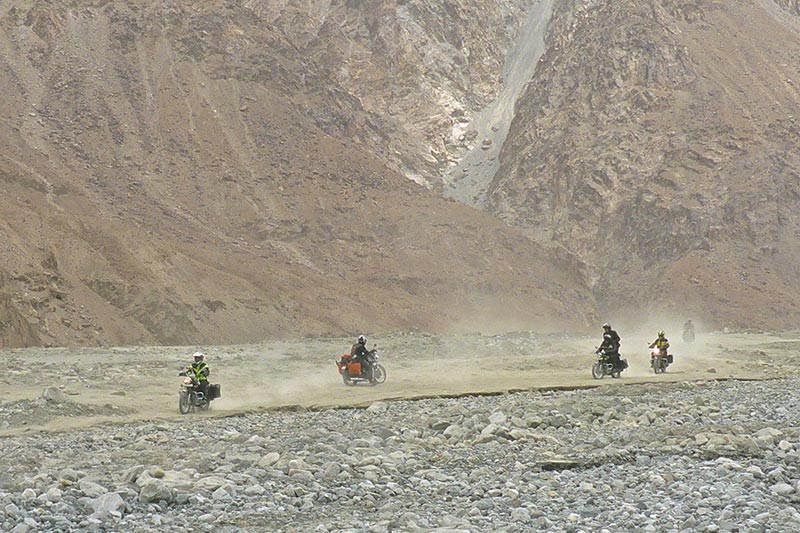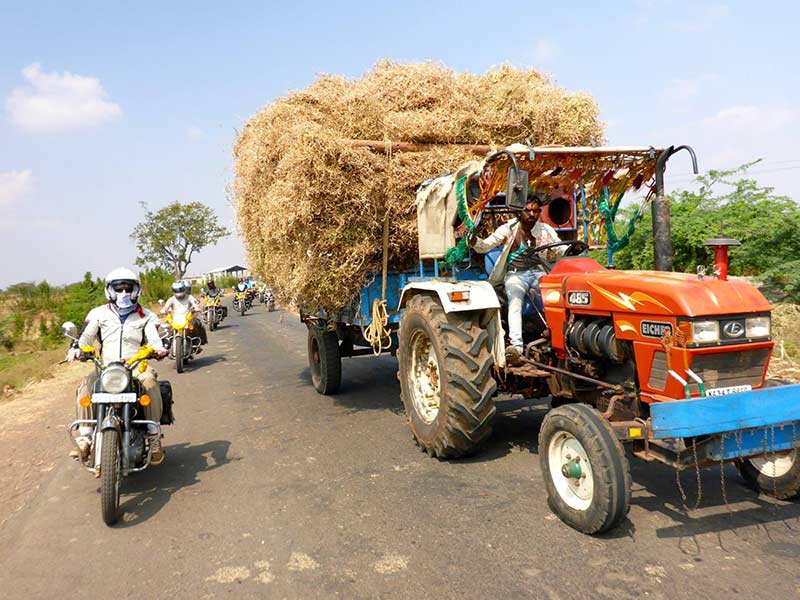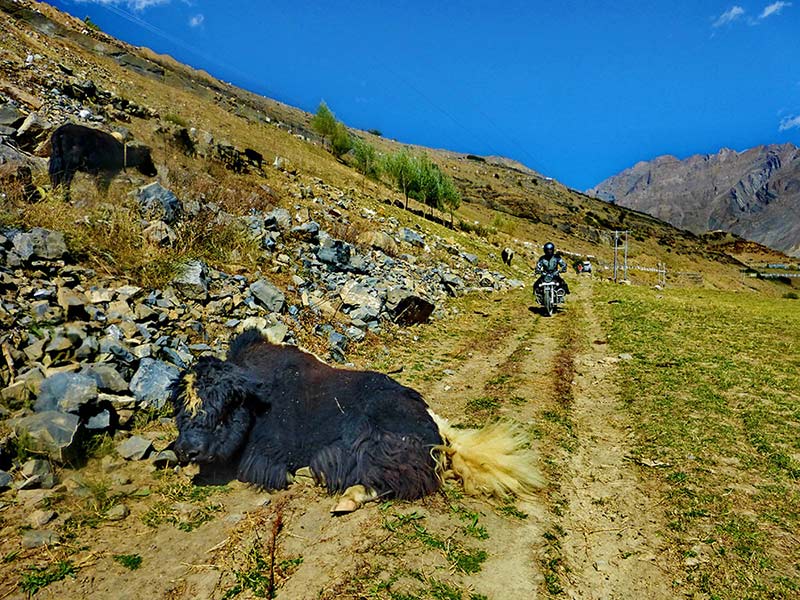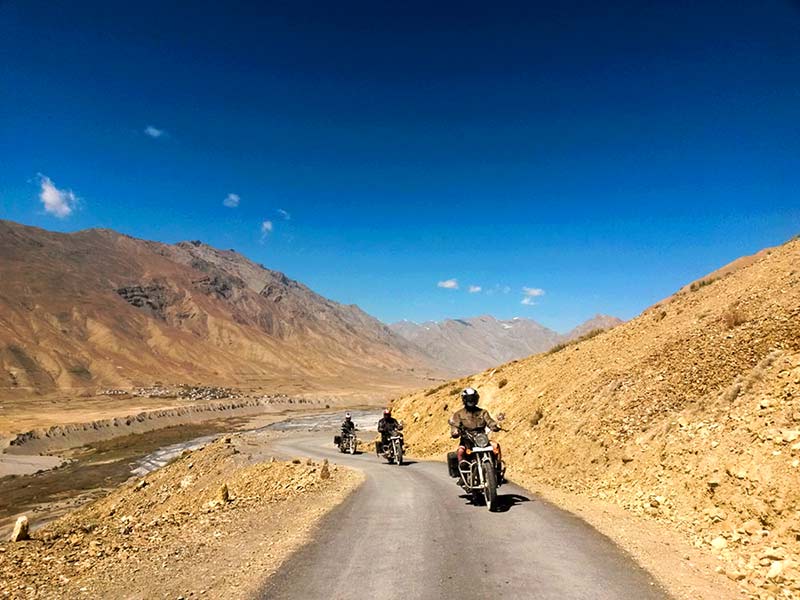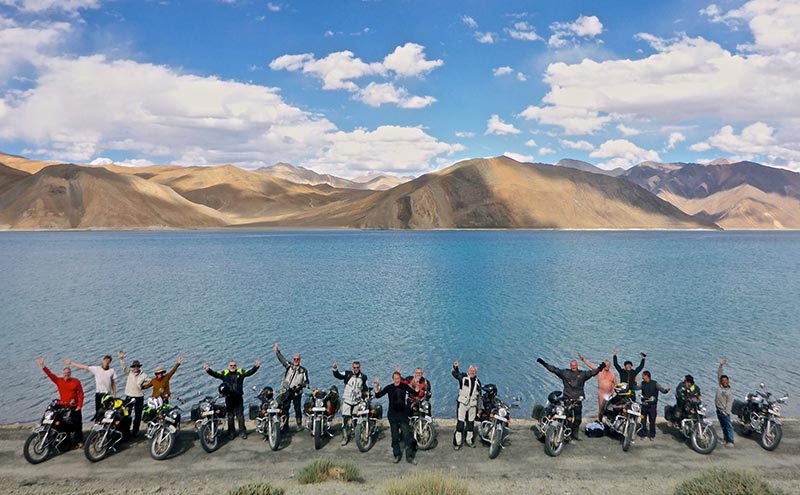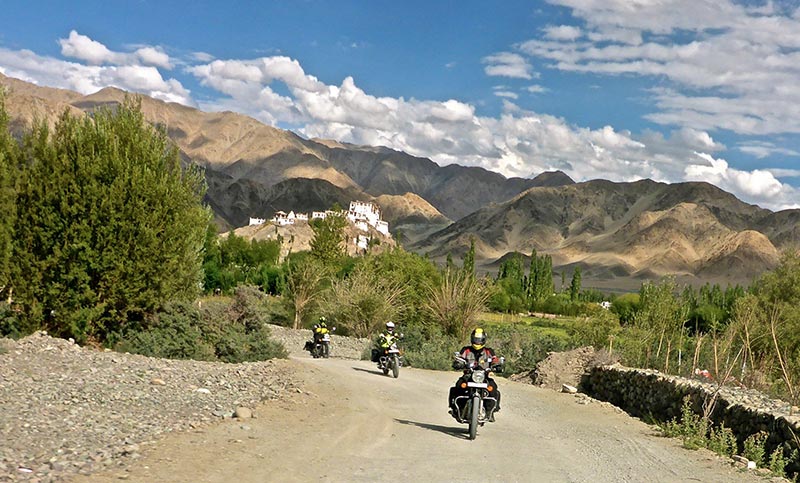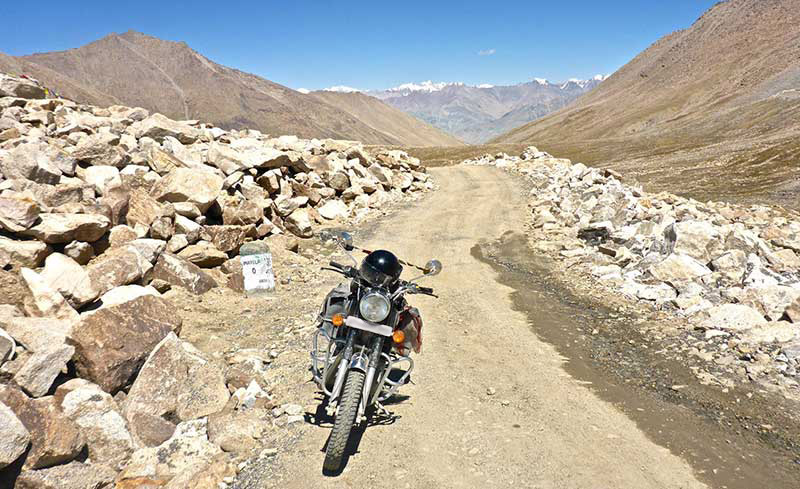Motorcycle Touring in India: The Ultimate Guide to Safety
If you watch the news, you might think that motorcycle touring in India is only for bikers with a death wish. The Indian roads don’t always get the best press coverage, but they’re the gateway to some of Asia’s most breathtaking sights. In this article, we look beyond the hair-raising headlines and share some tips for safe motorcycle riding in India.
Traffic Laws in India
Within 5 minutes of riding a motorbike in India you might feel that the traffic laws are there to be broken! Indian motorists are famous for inventing rules that suit them, and a common sense approach is often safer than doing everything by the book. Even so, it pays to understand the basic traffic rules before setting out on a motorcycle tour of India.
Are the Roads Safe in India?
When most people think about driving in India, they think of congested streets where rickshaws, scooters, and pedestrians jostle for position. And it’s true, roads in Indian cities like Mumbai and Delhi are notoriously busy, and dangerous too. Driving in these urban centers can feel like a game of Russian roulette, as each motorist prays the others will give way first.
But it’s worth looking beyond the stereotypes, because the state of India’s roads varies hugely, and so does the traffic that travels on them. Away from the cities, India has some of the most beautiful roads in the world – from narrow mountain passes to secluded routes through the rainforest. The best motorcycle tour operators in India plan their journeys carefully, avoiding the worst roads and focusing on the most spectacular routes the country has to offer.
Safe motorcycle riding in India depends on respecting the traffic ‘food chain’: if another vehicle is bigger than yours, and it doesn’t stop, then give it the right of way. Safe riders take a common sense approach – and neverassume other drivers will follow the traffic laws. Ultimately, riding a motorbike in India is a calculated risk, but you can tip the odds in your favor by staying on safer roads, traveling with experienced guides, and applying smart road safety measures.
Road Conditions in India
Road surfaces vary from tarmacadam through to gravel and – in the most remote regions – dirt. Route planning comes into its own here, and it’s vital to choose a rugged, capable motorbike that’s well serviced. You can also prepare yourself as a rider by riding on poorly maintained roads or dirt tracks closer to home. Motorcyclist Online have published a great article looking at how to ride a motorbike on gravel and dirt roads.
Still worried? It should give you a warm, fuzzy feeling inside to know that our own Indian motorcycle tours are fully serviced and accompanied by a service vehicle. If our riders ever struggle with the conditions then they can ride in the service vehicle while our mechanics take over on the bike.
Which Bike is Safest for Road Trips?
It seems that every biker has their own favorite bike for road trips (we’d guess this question has led to a few arguments at bars around the world). But, when it comes to safe motorcycle riding in India, one brand stands out: Royal Enfield, and that’s the brand we use for our own tours.
The brand’s 500cc models have enough power to cope – but they don’t reach the break-neck speeds of some motorbikes. This makes these bikes easier to control, and an all-round safer ride for India’s roads.
What Else Do I Need?
While a helmet, motorcycle boots and gloves are essential, it’s also smart to equip yourself with further safety equipment when touring unfamiliar roads. Many bikers feel safer with knee and back protectors, and these can significantly lessen the physical trauma caused by an accident.
The Boring (But Very Important) Bits…
Insurance Requirements
Want to tempt fate and invite problems? Then you should consider traveling to India without adequate travel and medical insurance. But for the rest of us, insurance is a basic must-have.
Most comprehensive travel insurance policies cover theft and loss, and there’s a lot you can do to protect yourself from having to make a claim in the first place. When you leave your motorcycle, ensure it’s somewhere safe – like a secure parking facility, or a private lot for hotel guests. Pack light and only take items you truly need. Leave high-value jewelry at home (sure, we know your Rolex looks great, but a cheap quartz watch is less likely to end up on a robber’s wrist). Keep essential valuables (like your phone and cash) with you at all times.
Many comprehensive insurance policies also cover emergency medical costs. It’s important to remember that India is a developing nation, so medical facilities can be limited – especially in remote areas. Many travelers prefer to be treated in their home country, so always ensure your policy covers bills linked to international medical transfers.
Vaccinations for Travelers to India
The World Health Organization recommends several vaccinations for travelers to India, such as cholera, typhoid, rabies, tetanus, polio, yellow fever, hepatitis (A and B), and Japanese encephalitis. Be sure to speak to your doctor well in advance of your departure to arrange your vaccinations.
Both dengue fever and malaria are present in areas of India, and travelers may wish to take preventative medication, as well as investing in deterrents like insect repellent.
High-Altitude Sickness
Some of the best motorcycle tours in India include the high mountain passes – where the scenery is at its best. But some riders are affected by high-altitude sickness. This condition is caused by the lower oxygen levels at altitude and the drop in air pressure as you climb.
High-altitude sickness is most risky for those traveling above 8,000 feet. It can affect people who are very fit, young, and otherwise healthy. The commonest form of high-altitude sickness is Acute Mountain Sickness (or AMS). Some common symptoms to watch out for include nausea, headaches, shortness of breath, fatigue, and dizziness – the last two are especially risky for motorcyclists navigating mountain roads.
If your route takes you to altitudes above 8,000 feet, then you should plan a gradual ascent and avoid climbing more than 1,000 feet per day, taking regular rest days as you go. Drink plenty of water and avoid strenuous exercise until your body has acclimatized. You may wish to take Acetazolamide medication with you. If taken just before reaching high altitudes, this drug can help you acclimatize, so be sure to speak to your doctor in advance of traveling.
You can learn more about altitude sickness and other preventative steps on the UK National Health Service’s website or Web MD.
Medical Supplies
If you use any prescription medications, ensure you have enough supplies for the duration of your motorcycle tour of India. You may also wish to bring along some basic non-prescription medicines for common complaints such as headaches, sickness, and muscle fatigue.
While most responsible tour operators (including ourselves) bring along first aid supplies, many bikers like to make up their own first aid kits. This UK National Health Service article on travel health includes a list of the kinds of first aid supplies you should pack.

